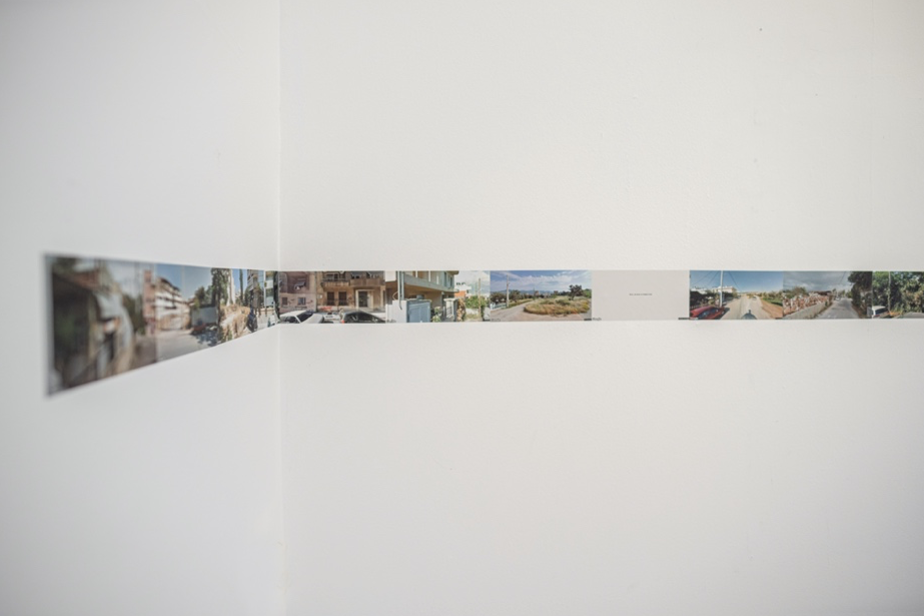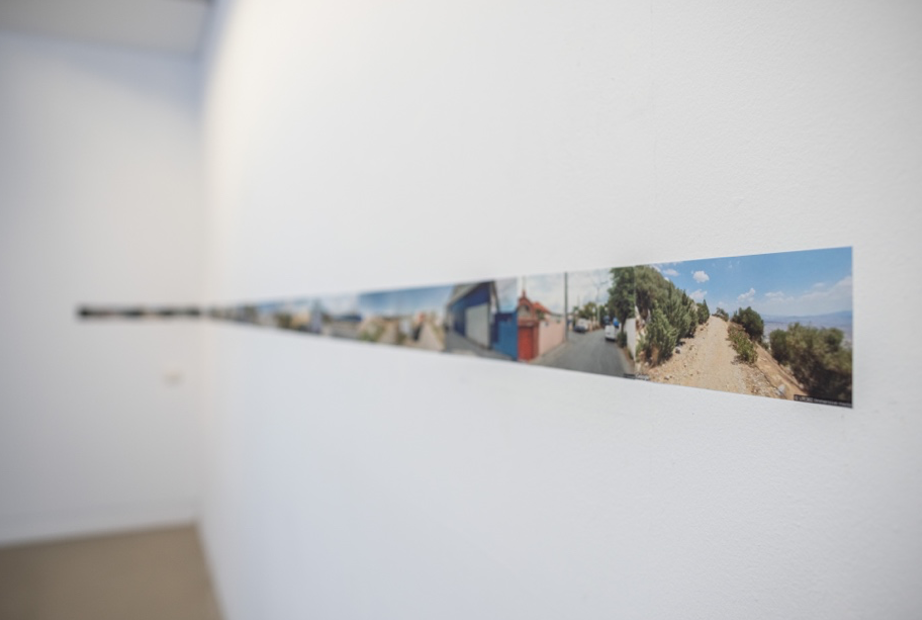THE LONELY MACHINE
2020-22




The
inhabitants of the world, creatures of all kinds, human and non-human, are
wayfarers;
generations
are like “a series of inter- laced trails.” String figures all.
Donna Haraway, Staying with the Trouble, (Duke
University press, Durham and London, 2016), p.32
The Lonely Machine initiated as a research project in 2020 and developed
in a form of an application which enables a device to take photographs (screenshots)
from Google Street View. In the current stage the user inputs the coordinates of any location using a geodata
platform and can
also input certain variables of the image in
the code, such as the depth
of field, camera angle and number of photos. The
project is in collaboration with IT professional Kostis-Saitas Zarkias, the
research for 2021 was supported by the Greek Ministry of Culture.
The Lonely Machine unfolds as a futuristic narrative of a machine’s view of the several different
locations it ‘visits’. The machine’s field of view is the actual imagery produced by
another machine, the Google Street View, where it chooses what to photograph from this endless visual world.
When it is not worth ‘clicking’ it prefers a white background that writes:
“Sorry we have no imagery here”.
The Lonely Machine strolls
around wounded areas of the earth, where the ecological stress can no longer be
hidden and the carrying capacity has been exceeded, the degraded and polluted
ones, those attacked by overpopulation, hypertourism, deforestation, water
pollution. The Lonely Machine is, a chthonic one, a cyborg, a critter of the
Terrapolis, but above all an SF: a string figure, a sign of science
fiction or fantasy, of speculative fabulation[1]which dares to stay with the trouble. It could be easily, a flaneur, one
that strolls around the urban landscapes. But no, as this is no longer the case here and now, not in
our times, the times we must think; the times of urgencies that need stories[2].The
Lonely Machine is rather a wayfarer on an SF mode,
who entangles, who tracks the lines of living and dying, who cultivates
response-ability, who makes present to itself what it is doing, who lives in
consequences or with consequence. It is not one that takes on reinterpreting
the image of the city[3],
like the flaneur, but the one who composts on a damaged planet of capitalist
ruins.[4]
It is on a mission of bringing together
past and future stories, new and old ruins, futuristic fantasies, ancient
myths and technological advances of a wounded earth: “giving and receiving patterns, dropping threads
and failing but sometimes finding something that works, something consequential
and maybe even beautiful, that wasn’t there before, of relaying connections that
matter, of telling stories in hand upon hand, digit upon digit, attachment site
upon attachment site, to craft conditions for finite flourishing on terra, on
earth... a string figure which is thinking as well as making practices,
pedagogical practices and cosmological performances.”[5] It shreds and layers like a mad gardener[6], creating
an open and shifting archive which activates linkages and refuses exclusion, narrating new stories on what
could happen or could have happened, calling
for string figure games that shape practices of living and dying in rich
worldings[7] And it is not one but many as it itself
manifests using the plural ‘we’ when imagery is not enough.
At
large, the work reflects on
the perplexed relations between virtual and real, past and future, nature and
culture, local and global and how they are reconsidered and transformed through
advanced technology. The Lonely Machine is an ongoing project that attempts to examine the virtual space through
technology, in order to compose collective eco-narratives that can address the troubles and improbability of our times.
![]()
![]()

The Lonely Machine was for first
time exhibited in June 2022 in the group exhibition “Weaving Worlds”
curated by Daphne Dragona, in Athens, ACG Gallery (installation shots above).
The edition “Sorry we have no imagery here” was created by Constantinos Hadjinikolaou.
Supported by:
![]()
[1] Donna Haraway, Staying
with the Trouble, (Duke University press, Durham and London, 2016), 10[2] Haraway, 35
[3] Walter Benjamin, The Arcades Project, Harvard University Press, 2002
[4] Haraway, 36
[5] Haraway, 10 and 14
[6] Haraway, 57
[7]Haraway, 10


